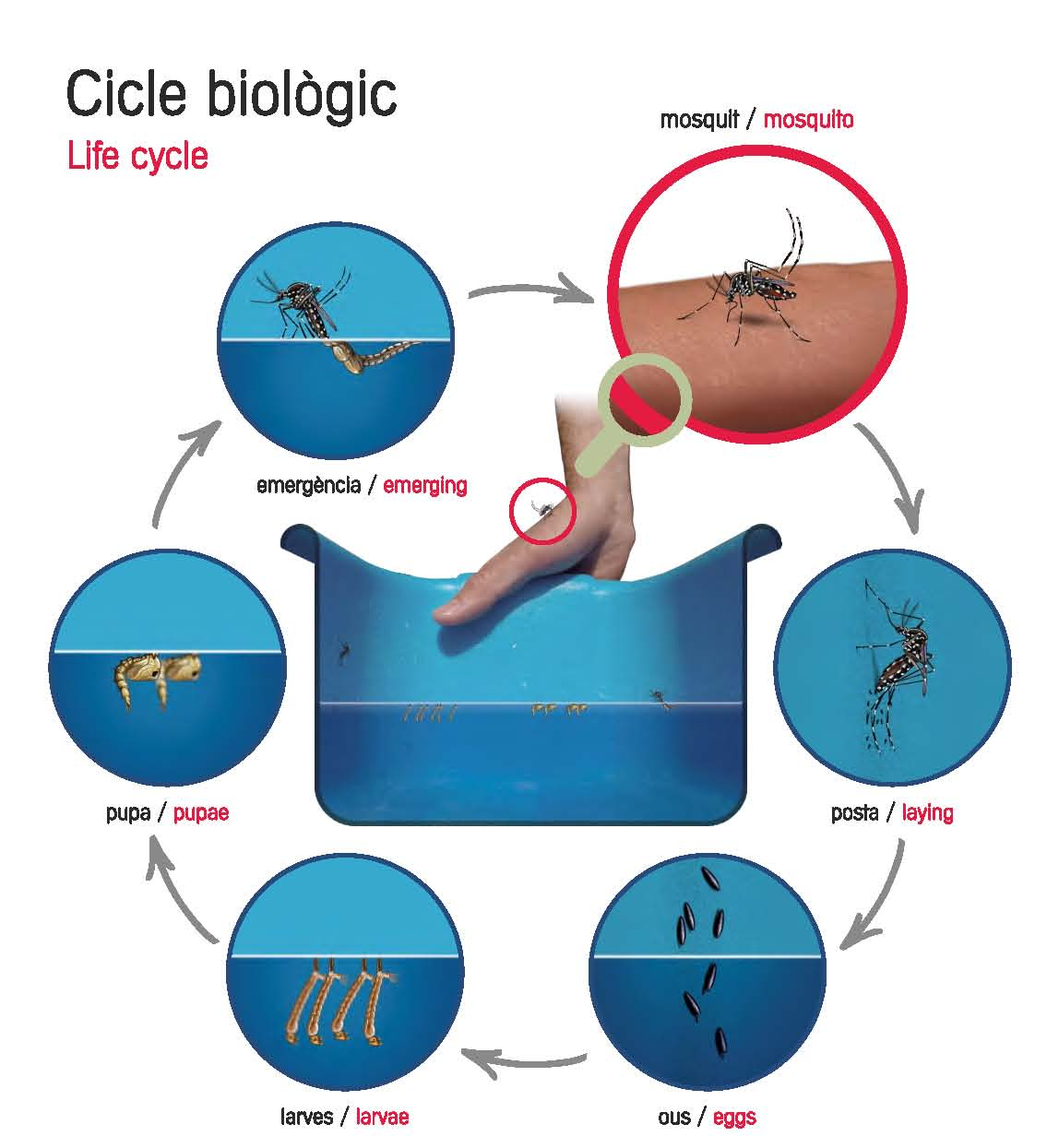 The life cycle of the tiger mosquito comprises the egg, larval, pupal and adult stages. The immature stages (larval and pupal) occur in water, while the adult stage is aerial. Unlike other mosquitoes, the tiger mosquito does not need much water to breed.
The life cycle of the tiger mosquito comprises the egg, larval, pupal and adult stages. The immature stages (larval and pupal) occur in water, while the adult stage is aerial. Unlike other mosquitoes, the tiger mosquito does not need much water to breed.
Its larvae develop very well in small amounts of stagnant water, such as that which might be found in a plant pot, a bucket or even an ashtray. The female lays her eggs (invisible to the naked eye) on the inside wall of recipients. When these recipients are covered by water, the eggs hatch and the larvae emerge, later becoming pupae.
The final transformation then takes place: the wings emerge and the metamorphosis into an adult tiger mosquito is complete. Within 48 hours of this, the mosquito is capable of biting.
Over the course of a week, feeding on human blood, the female will have laid between 80 and 200 eggs. Half of these will be females, which within seven days will have bred 3,200 more tiger mosquitoes.






